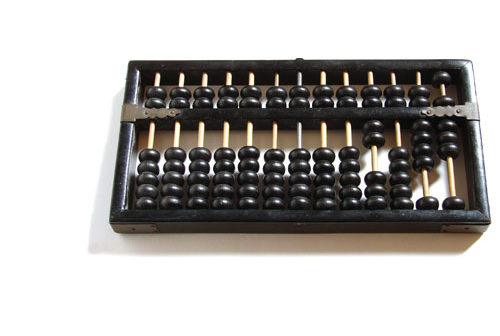Is having a Chinese bank account necessary? While the answer may seem obvious to you, it’s simply not necessary for people who don’t have any local banking needs. For foreign employees who are paid overseas and withdraw money via international banks, the only purpose of having a local account is to potentially decrease service or transaction fees.
American citizens and permanent residents (green card holders) should be aware that they are required by US tax law to declare all overseas bank accounts, especially those that contained at least USD 10,000 or the equivalent in foreign currency at any point during the tax year. As you can see, China certainly isn’t a good place to stash money.
Companies that pay employees via direct deposit almost always choose the bank where the money is received, which means that you’ll probably be required to open an account there. If that’s the case, someone from the company or HR department should be able to assist with the process.
Choosing a Bank
China has a number of banks to choose from. If you have a choice, the bank should be selected based on the number of branches and automatic teller machines (ATMs) available around Beijing and China. Other considerations include the ATM networks to which they belong. For users who receive all or part of their salary in RMB, being able to use those cards to withdraw cash or pay for purchases overseas can be a real benefit.
ATMs
All major banks in China are part of the UnionPay network, similar to ATM networks such as Cirrus, Maestro, or Plus in Europe and North America. That system allows withdrawals from any member banks, but fees may apply. Also, ATM users should know that unlike most banks internationally, some domestic banks apply “roaming charges” similar to mobile phone service.
In other words, if a Bank of China customer who opened their account in Beijing uses an ATM in Tianjin, they will be charged a roaming fee when they withdraw money. Keep this in mind when deciding how much cash to take on a domestic trip. Overseas exchange rates are often more favorable for ATM transactions than for other foreign exchange transactions. In addition, having a Chinese account allows for easy conversion of the local currency, which may not be accepted at all foreign exchange counters.
Almost all ATMs in China offer the option of an English interface, and access to that menu will be clearly labeled with an “English” button or tab. ATM cards in China usually have six-digit PIN codes rather than the more common four-digit codes seen in North America, so choose one wisely and be sure to remember your password.
Opening an Account
Opening a bank account in China is exceptionally easy, especially when compared to opening accounts in countries like post-9/11 US. All you need is a passport and your home or office address (preferably in Chinese). The clerk can help you fill out the paperwork in Chinese but be sure to verify any information written down in romanized form as it will be difficult to deal with your account down the line if the name on your passport is not entered correctly when you sign up. You’ll get a simple savings account by default, which comes with a debit card for ATM transactions.
Fixed-time deposits are also available for varying periods, but you’ll need to have an existing savings account in order to use this feature and get help from a bank teller. If you don’t speak Chinese, it’s best to bring someone who does to understand the options, durations, and interest rates available.
Banks
China Merchants Bank (徠陵契) is based in Shenzhen and has established itself as the most friendly and service-oriented bank in China. Case in point: At China Merchants Bank, a lost ATM card can be replaced in a matter of minutes; at the Bank of China, it takes ten working days, during which you can’t withdraw cash. The staff is willing to help customers fill out forms and lines are generally short. They also have the best mobile banking apps for both iPhone and Android systems, and their online banking is accessible to both Mac and PC users. The biggest drawback is the relatively small number of ATMs in Beijing compared to other banks, so you’ll need to memorize the locations closest to you. Aside from their headquarters on Financial Street, the bank also has a large office at the southeast corner of Guomao Bridge in the CBD.
Bank of China (櫓벌陵契) is probably the country’s best-known bank. It has the most international branches of any Chinese bank and numerous ATMs in Beijing. BoC is probably the best option if you’re planning to transfer money regularly either domestically or overseas. Account holders pay only RMB 2 per transaction, instead of 1 percent of the value of the transaction like at other banks. Bank of China is best positioned to transfer significant amounts of money overseas, and offers multi-currency accounts and withdrawals domestically. One thing to bear in mind with Bank of China is that it’s a bureaucratic place. Transactions take a long time and the queues are long. The concept of “express service” doesn’t apply here unless you become an elite-level customer. Still, having a Bank of China account can be very helpful. And for an RMB 2 service fee per month, it’s a bargain if you ever use it. Consider opening one even if you do your primary banking somewhere else.
Industrial and Commercial Bank of China (묏陵契), better known as ICBC, is now the world’s largest bank with USD 3 trillion in assets. If superlatives matter to you, ICBC may be the right choice for you. The bank has numerous branches throughout Beijing, and many companies use them for basic services like paying out salaries. For a big bank, they often act like a dinosaur. ICBC still only supports PC-based online banking. Yes, you read that correctly; the world’s biggest bank still doesn’t support Apple users. ICBC falls more on the side of the Bank of China in terms of service; transactions can take a long time. This is a bank that, like Hong Kong and Shanghai Banking Corp. (HSBC), wants corporate customers, not private ones. Still, if you have an ICBC card, you’ll never need to worry about your card not working at an overseas ATM.
This article originally appeared in the beijingkids Home & Relocation Guide 2014. To get your free copy, email distribution@truerun.com or view it online at Issuu.




